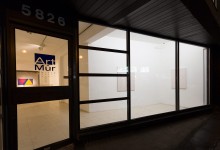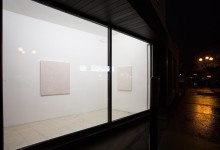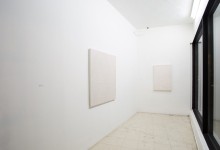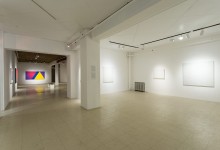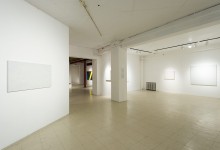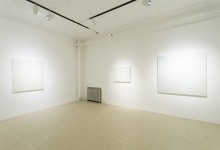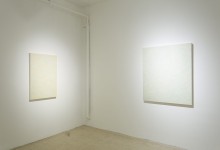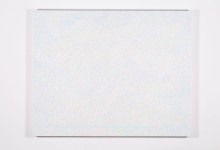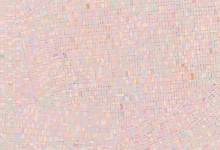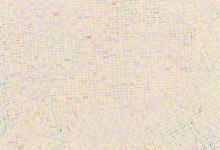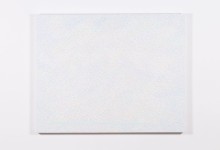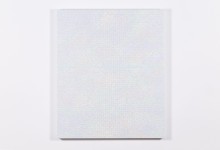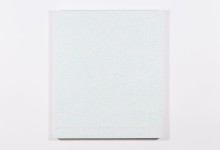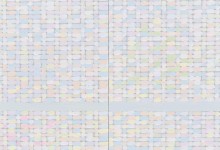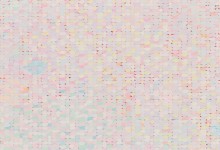Opening reception: Saturday, May 4, 2019 from 3-5 p.m.
Christine Nobel: Between the notes
Text by Sara Nicole England
Christine Nobel’s paintings in Between the Notes share a faithfulness to a soft colour palette of sky blues, mauves, peaches, roses and whites, reminiscent of a pastel-coloured youth or the dense atmosphere of an Impressionist work. Instead of the loose strokes of a foggy London sky, the application of pigment in Nobel’s work is careful and contained, and exceeds from representing any specific form. Each colour is snapped into a gridded pattern and applied with acute precision; every mark appears deliberate and necessary to the entire picture.
The grid is a signature element in Nobel’s series. It draws attention to and is the source of the technicality of Nobel’s painting process. It is also a bearer of time—a record of the meticulous labour and repetitive gestures that amount to each work. The grid has resonated with artists throughout history, but within modern art in particular. Of the grid, Agnes Martin said, “When I cover the square surfaces with rectangles . . . it lightens the weight of the square, destroys its power.”1 Perhaps this is what gives Nobel’s works their qualities of lightness and expansiveness: the edges of a painting lose their power when we see, in the repetition of the grid, that each boundary gives way to another. With this, the grid expresses infinity and enveloping rather than containment and enclosure. The spaces in-between or rather between the notes, provide a structure for extended, slow viewing in which we are invited to closely explore the line between the seen and unseen.
Between the Notes balances softness and rigidity, repetition and difference, to form a compelling viewing experience that stretches the imagination. For some, Between the Notes might offer a meditative experience because of the works’ relationship to slowness and reference to continuity and expansion through their intricate patterns. The effect of such patterns is not unlike the structure of woven textiles, referenced in Between the Notes both visually and through each work’s materialization of time’s passing. In the way that weaving is a time-based and embodied labour, Nobel’s paintings systematically document her own accrued gestures rather than eschew reference to the artist’s hand.
Where the embodied time of craft-based work is present in Between the Notes, so is the speed and hyperconnectivity of the digital world. Rows of painted rectangles parallel the coded space of the digital where zeros and ones are strung together to create binary code. While textiles and digital data engage with different temporalities, they share the grid as their foundational structure, conveying interconnection and permeability across artistic boundaries.
Between the Notes attends to the mystery and wonder of the in-between. In music, this is found in the breath of silence before the note. The paintings in Between the Notes gesture to this moment, calling attention to the elusive spaces between the visible and the invisible, the surface of the canvas and its underpainting, and seeing and knowing.
1. Lucy R. Lippard, “Homage to the Square,” Art in America 55, no. 4 (July–Aug. 1967): p. 55.


